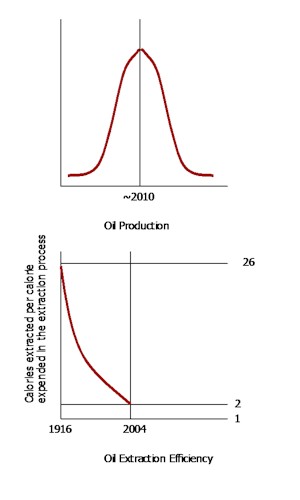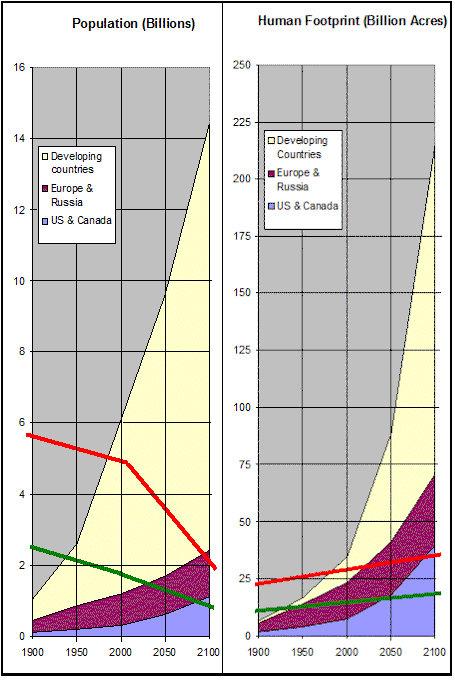 Toxins. Chemicals. Artificial additives. Trans and saturated fats. Sugars. Salt. Genetically manufactured ingredients. Preservatives. Hormones. Pesticides. Herbicides. Cholesterol. Toxins. Chemicals. Artificial additives. Trans and saturated fats. Sugars. Salt. Genetically manufactured ingredients. Preservatives. Hormones. Pesticides. Herbicides. Cholesterol.
It’s hard to find foods that are free from this crap. Packaged, processed, and ‘fast’ foods are replete with them. Big Agribusiness makes its living by dumping all this junk in our food to make it cheaper to produce, better-looking or more addictive. So what can we do? Ideally, we should buy all our food ingredients from local organic farmers (or grow our own). If that’s possible, and affordable for you, then you’ve got lots of choice, and you can stop reading this article. For the rest of us, it’s a real challenge. I won’t get into the debate over whether it is natural or healthy to eat meat (humans have evolved, in different times and places, to be pure vegetarians, almost exclusively carnivores, and omnivores) — but most factory-farmed meats are a toxic soup of chemical additives designed to make the animal fatter faster, antibiotics, hormones, pesticides, herbicides and other poisons. Fish from the sewers that we have turned our rivers, lakes and oceans into are often so dangerous children and pregnant women are forbidden to eat them. Most processed and packaged foods, and the garbage we get from fast-food restaurants, are full of chemicals, trans fats and other artificial and adulterated ingredients that have never been proved safe and are suspects in a host of diseases. These processed foods also contain massive amounts of sugars: North Americans consume an average of nearly 140 pounds of sugars per year, half of it in sugared drinks, and ten times what our ancestors consumed a century ago. We’re addicted to it. And the Monsanto sugar substitute monopoly is ratcheting up our consumption at a dizzying rate, deepening our addiction and poisoning us with dangerous manufactured chemicals. Our salt consumption is tracking a similar dizzying upward curve. In most countries not only are genetically manufactured ingredients present in almost everything we eat, they’re not even labeled as such. The ‘accidental’ ingredients left over from chemical treatment of foods and from processing are likewise not on the label. Even our fruits and vegetables are washed in poisoned water, soaked in artificial pesticides, herbicides and preservatives, and grown in depleted, nutritionally dead soil on which we’ve dumped ever-increasing amounts of chemical fertilizers. Even many of our favourite teas, coffees and alcoholic beverages contain harmful and unhealthy ingredients. And other favourite foods are replete with cholesterol. Despite this, there are still lots of good things to eat, if you use your imagination and can get past your addictions. The key ingredients are organic, whenever possible locally-grown (because a lot of food value is lost in long-distance transportation and related preservation processes): fruits, vegetables, nuts, seeds, herbs, spices, beans and whole grains. These ingredients can be combined, without much effort, into:
The keys to making eating only such foods delicious are
So even if we don’t have a variety of organic farms and gardens handy (or in our own yards), we can still eat healthy, and, by avoiding the processed foods and buying raw in bulk, save money as well. The pride of self-mastering another useful skill (healthy gourmet cooking), the satisfaction of reducing animal cruelty and the irresponsible Agri-golopy’s hold over our lives, and the pleasure of eating yummy meals, are just the (stevia-sweetened) icing on the (carrot, spice andwhole grain flour) cake. Mmmm! Categories: Let-Self-Change and Health
|
Navigation
Collapsniks
Albert Bates (US)
Andrew Nikiforuk (CA)
Brutus (US)
Carolyn Baker (US)*
Catherine Ingram (US)
Chris Hedges (US)
Dahr Jamail (US)
Dean Spillane-Walker (US)*
Derrick Jensen (US)
Dougald & Paul (IE/SE)*
Erik Michaels (US)
Gail Tverberg (US)
Guy McPherson (US)
Honest Sorcerer
Janaia & Robin (US)*
Jem Bendell (UK)
Mari Werner
Michael Dowd (US)*
Nate Hagens (US)
Paul Heft (US)*
Post Carbon Inst. (US)
Resilience (US)
Richard Heinberg (US)
Robert Jensen (US)
Roy Scranton (US)
Sam Mitchell (US)
Tim Morgan (UK)
Tim Watkins (UK)
Umair Haque (UK)
William Rees (CA)
XrayMike (AU)
Radical Non-Duality
Tony Parsons
Jim Newman
Tim Cliss
Andreas Müller
Kenneth Madden
Emerson Lim
Nancy Neithercut
Rosemarijn Roes
Frank McCaughey
Clare Cherikoff
Ere Parek, Izzy Cloke, Zabi AmaniEssential Reading
Archive by Category
My Bio, Contact Info, Signature Posts
About the Author (2023)
My Circles
E-mail me
--- My Best 200 Posts, 2003-22 by category, from newest to oldest ---
Collapse Watch:
Hope — On the Balance of Probabilities
The Caste War for the Dregs
Recuperation, Accommodation, Resilience
How Do We Teach the Critical Skills
Collapse Not Apocalypse
Effective Activism
'Making Sense of the World' Reading List
Notes From the Rising Dark
What is Exponential Decay
Collapse: Slowly Then Suddenly
Slouching Towards Bethlehem
Making Sense of Who We Are
What Would Net-Zero Emissions Look Like?
Post Collapse with Michael Dowd (video)
Why Economic Collapse Will Precede Climate Collapse
Being Adaptable: A Reminder List
A Culture of Fear
What Will It Take?
A Future Without Us
Dean Walker Interview (video)
The Mushroom at the End of the World
What Would It Take To Live Sustainably?
The New Political Map (Poster)
Beyond Belief
Complexity and Collapse
Requiem for a Species
Civilization Disease
What a Desolated Earth Looks Like
If We Had a Better Story...
Giving Up on Environmentalism
The Hard Part is Finding People Who Care
Going Vegan
The Dark & Gathering Sameness of the World
The End of Philosophy
A Short History of Progress
The Boiling Frog
Our Culture / Ourselves:
A CoVid-19 Recap
What It Means to be Human
A Culture Built on Wrong Models
Understanding Conservatives
Our Unique Capacity for Hatred
Not Meant to Govern Each Other
The Humanist Trap
Credulous
Amazing What People Get Used To
My Reluctant Misanthropy
The Dawn of Everything
Species Shame
Why Misinformation Doesn't Work
The Lab-Leak Hypothesis
The Right to Die
CoVid-19: Go for Zero
Pollard's Laws
On Caste
The Process of Self-Organization
The Tragic Spread of Misinformation
A Better Way to Work
The Needs of the Moment
Ask Yourself This
What to Believe Now?
Rogue Primate
Conversation & Silence
The Language of Our Eyes
True Story
May I Ask a Question?
Cultural Acedia: When We Can No Longer Care
Useless Advice
Several Short Sentences About Learning
Why I Don't Want to Hear Your Story
A Harvest of Myths
The Qualities of a Great Story
The Trouble With Stories
A Model of Identity & Community
Not Ready to Do What's Needed
A Culture of Dependence
So What's Next
Ten Things to Do When You're Feeling Hopeless
No Use to the World Broken
Living in Another World
Does Language Restrict What We Can Think?
The Value of Conversation Manifesto Nobody Knows Anything
If I Only Had 37 Days
The Only Life We Know
A Long Way Down
No Noble Savages
Figments of Reality
Too Far Ahead
Learning From Nature
The Rogue Animal
How the World Really Works:
Making Sense of Scents
An Age of Wonder
The Truth About Ukraine
Navigating Complexity
The Supply Chain Problem
The Promise of Dialogue
Too Dumb to Take Care of Ourselves
Extinction Capitalism
Homeless
Republicans Slide Into Fascism
All the Things I Was Wrong About
Several Short Sentences About Sharks
How Change Happens
What's the Best Possible Outcome?
The Perpetual Growth Machine
We Make Zero
How Long We've Been Around (graphic)
If You Wanted to Sabotage the Elections
Collective Intelligence & Complexity
Ten Things I Wish I'd Learned Earlier
The Problem With Systems
Against Hope (Video)
The Admission of Necessary Ignorance
Several Short Sentences About Jellyfish
Loren Eiseley, in Verse
A Synopsis of 'Finding the Sweet Spot'
Learning from Indigenous Cultures
The Gift Economy
The Job of the Media
The Wal-Mart Dilemma
The Illusion of the Separate Self, and Free Will:
No Free Will, No Freedom
The Other Side of 'No Me'
This Body Takes Me For a Walk
The Only One Who Really Knew Me
No Free Will — Fightin' Words
The Paradox of the Self
A Radical Non-Duality FAQ
What We Think We Know
Bark Bark Bark Bark Bark Bark Bark
Healing From Ourselves
The Entanglement Hypothesis
Nothing Needs to Happen
Nothing to Say About This
What I Wanted to Believe
A Continuous Reassemblage of Meaning
No Choice But to Misbehave
What's Apparently Happening
A Different Kind of Animal
Happy Now?
This Creature
Did Early Humans Have Selves?
Nothing On Offer Here
Even Simpler and More Hopeless Than That
Glimpses
How Our Bodies Sense the World
Fragments
What Happens in Vagus
We Have No Choice
Never Comfortable in the Skin of Self
Letting Go of the Story of Me
All There Is, Is This
A Theory of No Mind
Creative Works:
Mindful Wanderings (Reflections) (Archive)
A Prayer to No One
Frogs' Hollow (Short Story)
We Do What We Do (Poem)
Negative Assertions (Poem)
Reminder (Short Story)
A Canadian Sorry (Satire)
Under No Illusions (Short Story)
The Ever-Stranger (Poem)
The Fortune Teller (Short Story)
Non-Duality Dude (Play)
Your Self: An Owner's Manual (Satire)
All the Things I Thought I Knew (Short Story)
On the Shoulders of Giants (Short Story)
Improv (Poem)
Calling the Cage Freedom (Short Story)
Rune (Poem)
Only This (Poem)
The Other Extinction (Short Story)
Invisible (Poem)
Disruption (Short Story)
A Thought-Less Experiment (Poem)
Speaking Grosbeak (Short Story)
The Only Way There (Short Story)
The Wild Man (Short Story)
Flywheel (Short Story)
The Opposite of Presence (Satire)
How to Make Love Last (Poem)
The Horses' Bodies (Poem)
Enough (Lament)
Distracted (Short Story)
Worse, Still (Poem)
Conjurer (Satire)
A Conversation (Short Story)
Farewell to Albion (Poem)
My Other Sites






 What It All Means This Week:
What It All Means This Week: Something remarkable has happened in the workplace in the forty years since I first entered it. Virtually every job in now unique, and no one knows everything about anyone’s job, or how to do it well, except the person who’s doing it. The only exceptions ñ a declining number of assembly line manufacturing jobs, and a depressing number of telemarketing and other jobs ñ are ripe for automation.
Something remarkable has happened in the workplace in the forty years since I first entered it. Virtually every job in now unique, and no one knows everything about anyone’s job, or how to do it well, except the person who’s doing it. The only exceptions ñ a declining number of assembly line manufacturing jobs, and a depressing number of telemarketing and other jobs ñ are ripe for automation.






